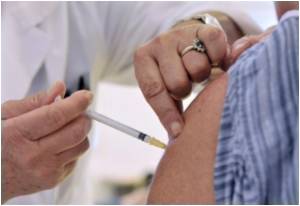
He had led a study on the issue and is the Director of the INFANT Foundation, a research and clinical institute based in Buenos Aires, in close cooperation with Vanderbilt’s Vaccine Center, US. In Argentina, he had a front row seat for the emergence of the H1N1 flu pandemic, which began in April 2009.
As the H1N1 virus burned its way northward through the southern hemisphere, Polack and his team went to work looking for evidence of a biomarker he had used before. A biomarker is a protein that can be measured in blood or tissue whose concentration reflects the severity or presence of some disease state.
“We have seen this before. Where non-protective antibody responses are associated with an immune-based disease in the lung,” Polack said.
Polack has previously published evidence that a first-line immune response, primed by an imperfect antibody, can overreact in a violent and uncontrolled fashion. Patients die from lung damage inflicted by their own immune system. A molecule called C4d, a product of this biochemical cascade (the complement system), is a marker for the strength of the response.
In adults who died during the 2009 H1N1 pandemic, high levels of C4d in lung tissues suggest a massive, potentially fatal activation of the complement system.
Advertisement
“This looked every bit like that,” Rice recalled about H1N1 patients, including Jason Martin, who piled into his intensive care unit in mid-September, 2009. “It was impressive. These were as sick as any patients I had ever seen. We tried all sorts of things,” Rice said.
Advertisement
But Polack wanted evidence beyond what he saw in patients in 2009. He asked Joyce Johnson, M.D., professor of Pathology with VUMC, to look for evidence this phenomenon may have happened during past flu pandemics. Johnson scanned Vanderbilt’s hand-penned autopsy ledgers, dating back to 1925. She was able to locate tissue samples in Vanderbilt’s tissue archive and extract half a dozen slices of lung tissue from Nashville patients who died during the 1957 Hong Kong flu pandemic.
Pediatric infectious diseases expert, John Williams, M.D., assistant professor of Pediatrics, Microbiology & Immunology, and his lab found the signature for an influenza infection in 4 of the 53-year-old samples, and were able to confirm the lung tissues had high levels of C4d. These patients too had died from an over-reactive immune response.
“C4d is part of the inflammatory cascade, and while it’s really good at killing organisms and protecting us, it’s sort of the slash and burn approach, capable of causing lots of tissue damage,” Johnson said.
But why did infants and the frail elderly escape this mechanism of death in the H1N1 pandemic?
“We found in 2009, the elderly had good immunity because they had seen a very similar virus sometime before 1957. Babies hadn’t seen many viruses at all so there was no trigger. It came down to the young adults — primed with an ineffective response. Their bodies already had defenses against previous influenza viruses that look like this one but weren’t close enough,” Polack said.
While the patient sample in the current study is relatively small: 75 patients, including 23 who died in 2009, and 4 from 1957, investigators were able to show that other theories, like dampening of interferon, or the triggering of an inflammatory response called a “cytokine storm,” were not supported by the evidence. Even the number of viruses present in a flu patient did not seem to correlate with the severity of illness.
“It suggests this (immune over-reaction) is what happens with pandemic to make young healthy adults seriously ill. There are other things that contribute to threat, but this is one of the main things for this age group,” Polack said.
The findings have been published in in Nature Medicine.
While many questions remain, one thing is clear: the H1N1 vaccine offers protection. Patients who died were overwhelmingly unvaccinated. Many fell ill before a vaccine was even available.
A study of genetics will be among the next steps to explain responses experienced by people like Jason Martin. It may be possible to find out who is susceptible to this over-reactive response so they can actively avoid exposure, or receive a specific regimen of treatment. But until then, vaccination is the best idea.
Source-Medindia









